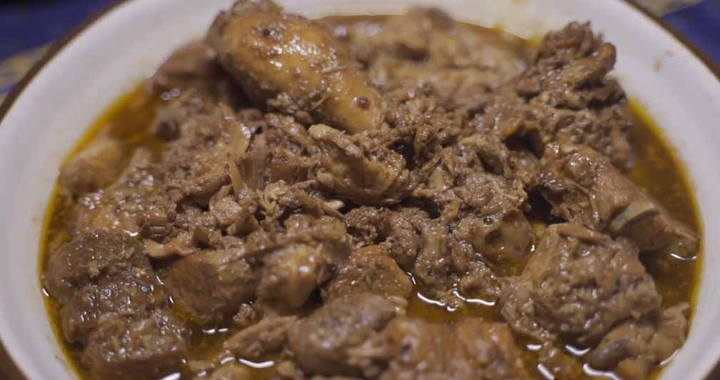
The Department of Trade and Industry (DTI) clarified on Monday that setting a standard for the adobo recipe was not mandatory and would only be necessary for international marketing purposes.
Trade Secretary Ramon M. Lopez, at a news briefing, said the agency conducted a consultation with local chefs to identify what constitutes a Philippine adobo recipe.
Lopez said this aims to avoid other countries from claiming the Philippines traditional adobo recipe as its own. The country is not the first to identify a certain recipe as a traditional recipe since this is being done by other countries.
“Alam niyo naman, pag abroad, sasabihin ng iba ay may Mexican adobo, baka may umangkin pa nung Philippine adobo. So kailangan lang meron tayong i-promote at ’yun ang ginagawa ng ibang bansa, meron silang traditional recipe,” Lopez said.
“Consultation lang po ’yun at saka hindi po ito standard, hindi po ito mandatory. We encourage creativity, innovation, kahit milyun-milyon na ang recipe nyan, we all welcome that,” he stressed.
The Department of Trade and Industry-Bureau of Philippine Standards (DTI-BPS) earlier disclosed that it had plans to develop Philippine National Standards (PNS) on popular Filipino dishes such as adobo, sinigang, lechon, and sisig.
In a news statement, the BPS established BPS/TC 92, a technical committee on Filipino Dishes, mainly composed of local chefs and chefs association, to discuss these standards, taking into consideration variations in cooking techniques observed in various regions.
“’Pag tinanong mo lahat dito, lahat sasabihin nila ang pinakamasarap na adobo ’yung luto sa bahay namin, luto ng nanay ko, tatay ko, lola ko, lolo ko. Ibig sabihin, hindi ho natin i-standard [ang] isang timpla, obvious ba? Hindi naman mandatory ’yan,” Lopez stressed.
Lopez said having a traditional recipe for adobo will also help the country’s bid to boost its creative industry exports. The creative industry is said to be one of the sunshine sectors for the country.
The outputs of the creative industry are mainly protected by intellectual property. One of the ways to protect intellectual property is through the use of geographical indications (GIs).
Based on the World Intellectual Property Organization (WIPO), a GI is “a sign used on products that have a specific geographical origin and possess qualities or a reputation that are due to that origin.”
A GI right, WIPO said, can prevent the use by a third party whose product does not conform to applicable standards. GIs are protected by a number of laws and treaties globally.
WIPO said products that can be provided a GI include those used for agricultural products, foodstuffs, wine and spirit drinks, handicrafts, and industrial products.

